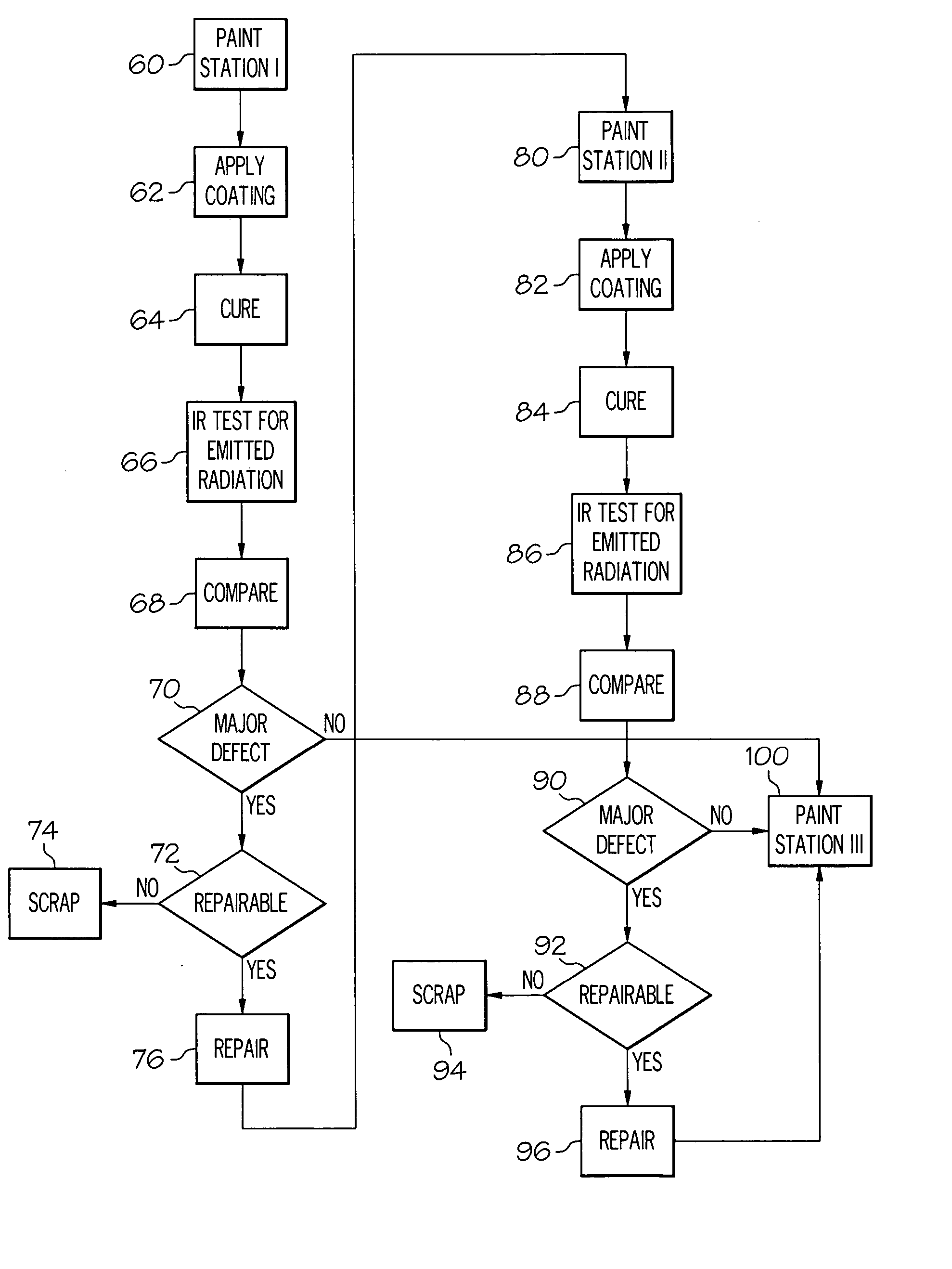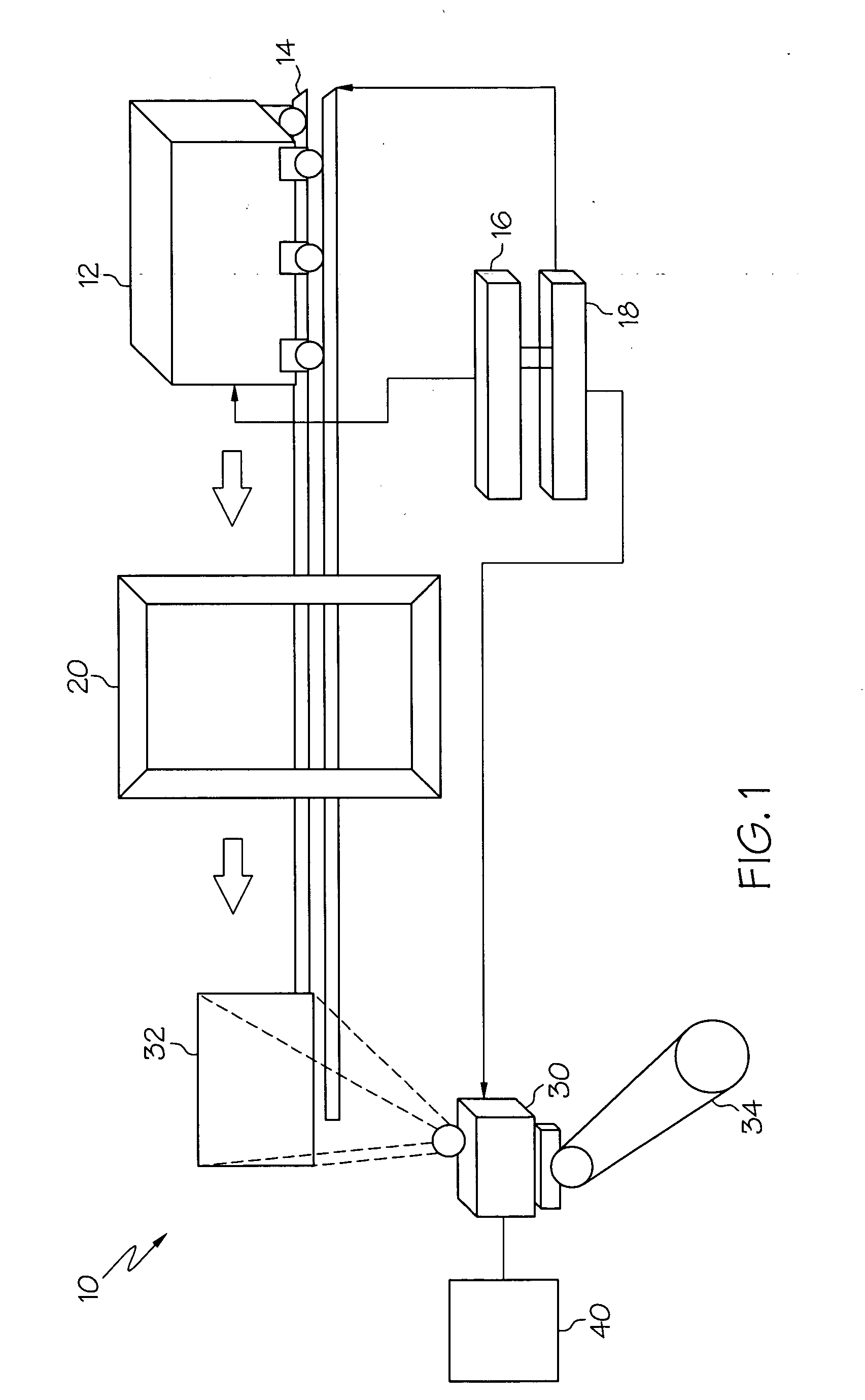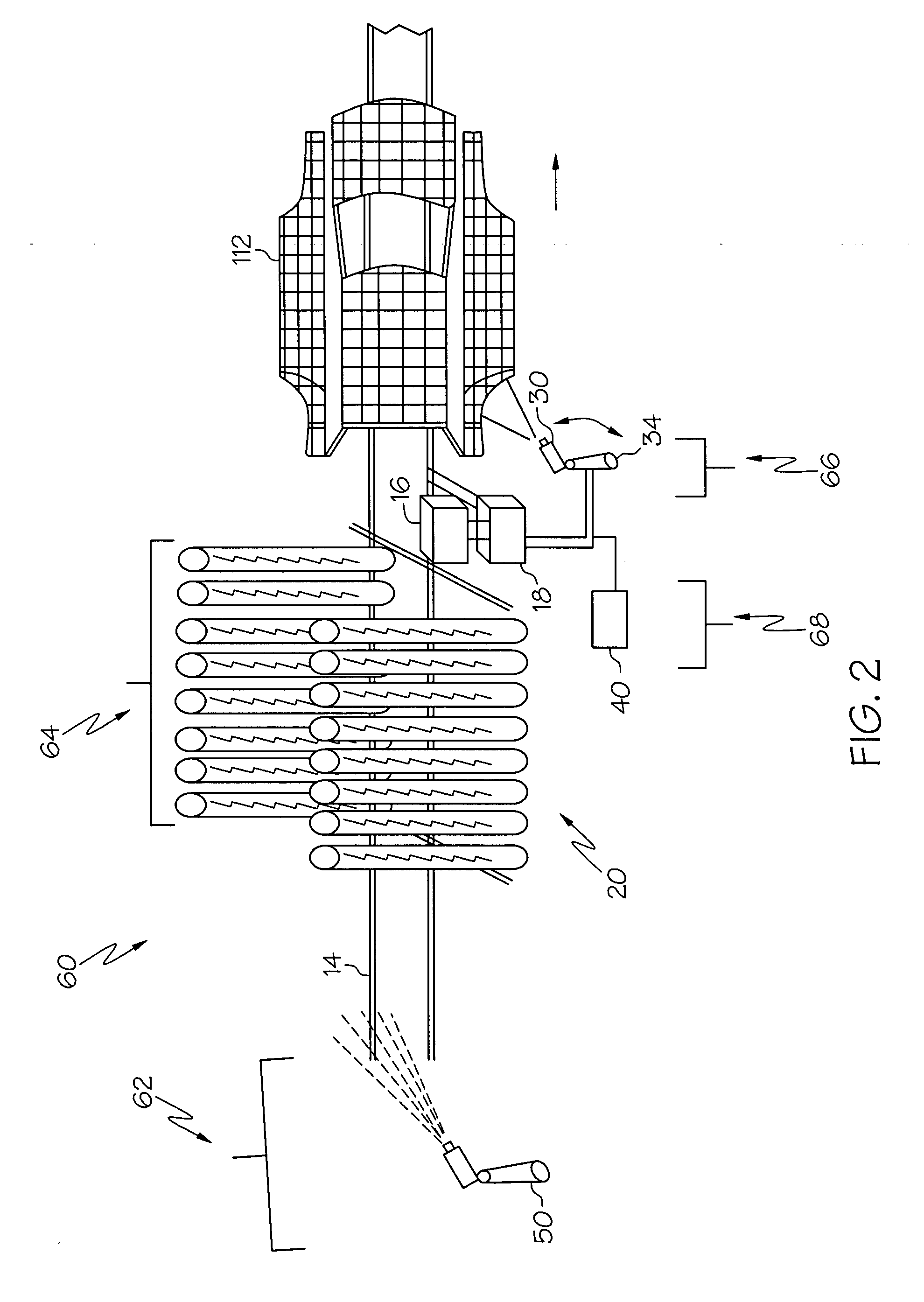Systems and methods for inspecting coatings, surfaces and interfaces
a technology of surface coating and inspection method, applied in the direction of material flaw investigation, optical radiation measurement, instruments, etc., can solve the problems of not being able the technique of properly prepared surface may diminish the perceived quality of exterior paint, and the inability to efficiently and effectively detect subsurface anomalies, etc., to achieve the effect of minimizing the need for operator involvement and efficient detection of subsurface anomalies
- Summary
- Abstract
- Description
- Claims
- Application Information
AI Technical Summary
Benefits of technology
Problems solved by technology
Method used
Image
Examples
example 1
[0092] In this example, an infrared system is installed on a production line for the detection of a chipped spot in an anti-corrosive coating. FIG. 8 shows a thermal profile of a steel structure coated with an anti-corrosive protective coat with a chipped spot representing a different thermal signature from its surroundings. (The same infrared detection system can be used for missed coat spots (thin paint) detection.) Those chipped spots expose the steel substrate which has a different thermal inertia from that of the coat making it an easy target to detect. This application is shown in FIG. 9 which shows a visual image of a thin paint area and the corresponding thermal profile. In accordance with principles of the present invention, the change in temperature over time of the area can be determined by monitoring the thermal profile over time, and defects can thereby be determined based upon the change in temperature versus the expected change, such as according to the methods descri...
example 2
[0093] In this example, an infrared system is used to investigate the adhesion layer integrity of a polymer plastic welded joint, according to additional principles of the present invention. The joints in this example are made from a composite of two layers of a polymer (High Density Polyethylene HDPE) with an adhesive interface. Carbon pigments have been added to one of HDPE layers for darkening to provide better thermal absorption and emission properties for insulation purposes. The geometry of the joints under inspection in this example, along with a cross section, are shown in FIG. 10, and the geometry of this example is represented as two cups welded together at the neck region. The bond interface is located between the HDPE layer and the rest of the geometry. In this example, the infrared thermography can be applied in two modes; a transmission mode where the stimulant (e.g., source) and the detector are located on opposite sides. For the reflection mode, the stimulant and det...
example 3
[0099] In this example, and in accordance with additional aspects of the invention, infrared “self-referencing” thermography is again applied. As mentioned, this technique eliminates the need for prior knowledge of a defect free area to allow automatic identification of defects from thermal profiles. The basis of this technique is to divide the thermogram profile into small, localized neighborhoods using the assumption that these neighborhoods exhibit the non-defective behavior for the thermal contrast computation. This technique can be utilized in both static (hot spot detection) and dynamic (Infrared Tomography) cases.
[0100] The thermal contrast computation is used in processing the data in this example, because of its ability to enhance the image quality and consequently the defect visibility. Thus, contrast could be computed by monitoring changes in temperatures in multiple profiles taken successively. Many definitions could be used to compute the thermal contrast. Such definit...
PUM
| Property | Measurement | Unit |
|---|---|---|
| temperature | aaaaa | aaaaa |
| temperature | aaaaa | aaaaa |
| temperatures | aaaaa | aaaaa |
Abstract
Description
Claims
Application Information
 Login to View More
Login to View More - R&D
- Intellectual Property
- Life Sciences
- Materials
- Tech Scout
- Unparalleled Data Quality
- Higher Quality Content
- 60% Fewer Hallucinations
Browse by: Latest US Patents, China's latest patents, Technical Efficacy Thesaurus, Application Domain, Technology Topic, Popular Technical Reports.
© 2025 PatSnap. All rights reserved.Legal|Privacy policy|Modern Slavery Act Transparency Statement|Sitemap|About US| Contact US: help@patsnap.com



